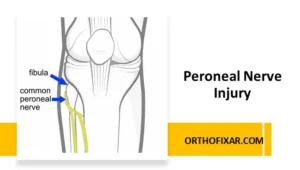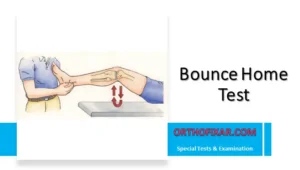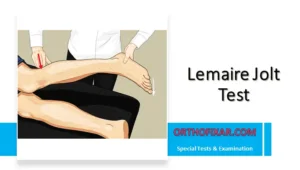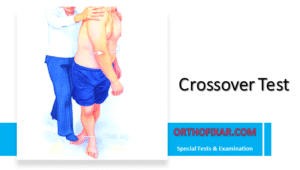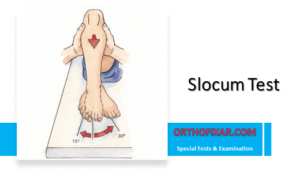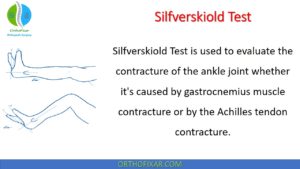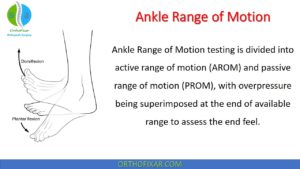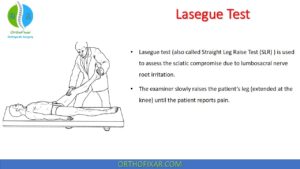Babinski Test
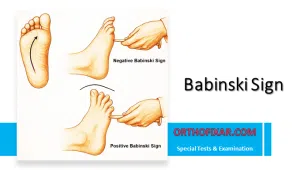
The Babinski test, also known as the plantar reflex test, is a neurological examination technique used to assess the integrity of the upper motor neuron pathway. This test evaluates whether the central nervous system is functioning properly by examining the reflex response of the foot when the plantar surface is stimulated.
How to Perform the Babinski Test?
The examiner uses a pointed object (such as the handle of a reflex hammer or a wooden stick) and runs it along the plantar aspect (sole) of the patient’s foot. The stroke typically begins at the heel and moves forward along the lateral border (outside edge) of the foot, then curves medially across the ball of the foot. The patient should be relaxed, and the movement should be firm but not painful.
See Also: Deep Tendon Reflex Testing
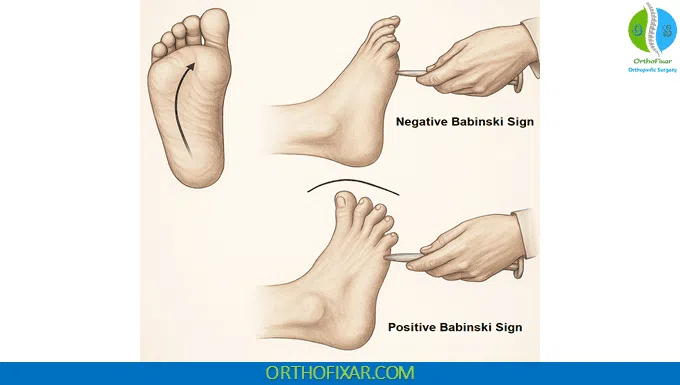
What is the Positive Babinski Test?
In healthy adults, the normal response is plantar flexion of the foot, with the toes curling downward (flexing). The sole of the foot turns inward indicating normal upper motor neuron function and a healthy corticospinal tract.
A positive Babinski test (Abnormal) is characterized by: Extension of the big toe (dorsiflexion) Abduction (splaying) of the other toes. This suggests dysfunction of the upper motor neuron pathway.
Bilateral Positive Babinski Sign
Finding: Positive response on both sides.
Interpretation: Suggests an upper motor neuron lesion.
This may indicate central nervous system pathology affecting both sides of the corticospinal tract.
Unilateral Positive Babinski Sign
Finding: Positive response on only one side.
Interpretation: May indicate either an upper motor neuron lesion on that side, or possibly a lower motor neuron lesion
The presence and location of a positive Babinski sign are crucial for localizing neurological lesions. A unilateral positive response is particularly significant as it may indicate a focal lesion on that side of the nervous system.
Special Considerations
In Infants
A positive Babinski test is completely normal in infants up to a few weeks old. This is not indicative of pathology and should not cause clinical concern. The normal maturational development of the nervous system eventually leads to suppression of this reflex, and by approximately 12 months of age, most infants will demonstrate a normal (negative) plantar response. The persistence of a positive Babinski sign beyond infancy, however, warrants further neurological investigation.
Examination Tips
For optimal results during Babinski Test, ensure the patient is in a comfortable, relaxed position. The stroke should be firm and controlled, starting from the lateral heel. Some examiners use an upside-down key or a plastic stick specifically designed for this purpose. The patient’s leg should be supported, and the examination should be performed in a quiet, calm environment to minimize startle responses that could interfere with the true reflex response.
Associated Pathology
A positive Babinski sign may be associated with various upper motor neuron lesions, including:
Possible Causes: Cerebral stroke, brain tumors, spinal cord injury, multiple sclerosis, traumatic brain injury, amyotrophic lateral sclerosis (ALS), or metabolic encephalopathy. The finding is non-specific and requires integration with other clinical findings and diagnostic testing for accurate diagnosis.
References & More
- Acharya AB, Jamil RT, Dewey JJ. Babinski Reflex. [Updated 2023 Jan 1]. In: StatPearls [Internet]. Treasure Island (FL): StatPearls Publishing; 2025 Jan-. Available from: PubMed
- Orthopedic Physical Assessment by David J. Magee, 7th Edition.
- Drouin E, Drouin G, Péréon Y. The Babinski sign. Lancet Neurol. 2017 Mar;16(3):180. [PubMed]
- Araújo R, Firmino-Machado J, Correia P, Leitão-Marques M, Carvalho J, Silva M, Nogueira A, Nunes C. The plantar reflex: A study of observer agreement, sensitivity, and observer bias. Neurol Clin Pract. 2015 Aug;5(4):309-316. [PubMed]

